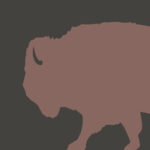
AMERICAN BISON
Not to be confused with Buffalo, the Bison was near extinction but is now the first National Mammal of the United States.
PROFILE
Tatonka is the leader of the herd. He is the largest, and usually the first to approach people. He will tell you how it is rather quickly, though. He also has a great head of hair. River is the lady leader. She is usually close behind Tatonka. She is the mother of Chance and typically one of the most confident ladies in the herd. She has even been seen standing up to Tatonka. Chance is the son of River and is usually close beside his mom. You can tell him apart from the rest of the herd because his horns are almost perpendicular to his head. As the youngest, he is still trying to find his place, but if he is not hanging out with River, he is usually with Bisön. TL (Tatonka’s Lady) is one of Tatonka’s favorites. During the rutting season, Tatonka barely lets her leave his side. Lopsy is named after her lopsided horns. She also has less hair around her eyes, which make them very noticeable. Apa may be pretty low on the male bison totem pole currently, but with his long horns (the longest of the herd), the keepers think he’ll be a great leader one day. Ace is the second in command. If Tatonka walks up to the keepers, Ace typically jumps into the center of the herd and runs the show. Penny is the second smallest of the herd. She is often mistaken as Bisön because of her size, but if you look at her left horn, there is a little indent on the tip of it. She and Bisön are usually the last to approach the keepers. Bisön (pronounced in a French accent) is the smallest bison and the last to go through the shift gate. She, Chance, and Penny are usually the furthest away from the fence.
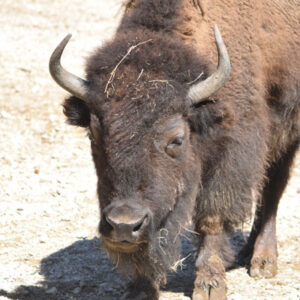
TL
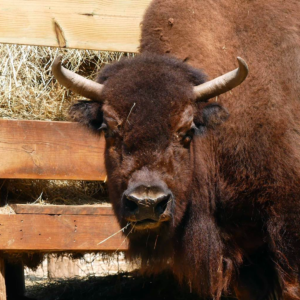
River
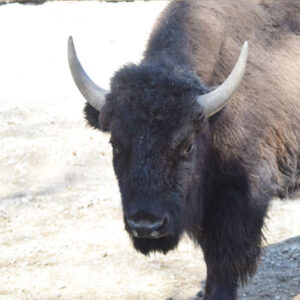
Chance
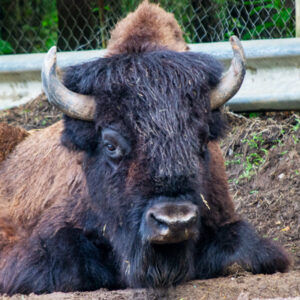
Tatonka
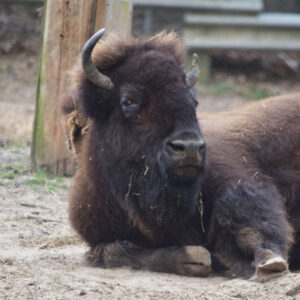
Lopsy
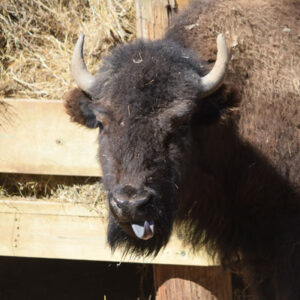
Bisön
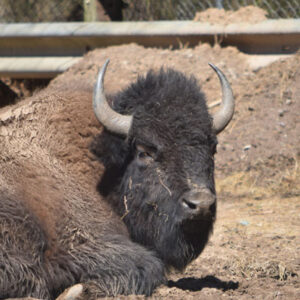
Apa
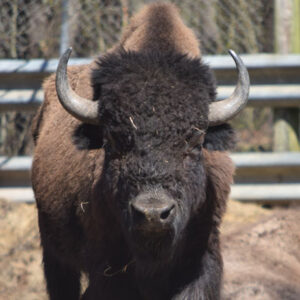
Ace
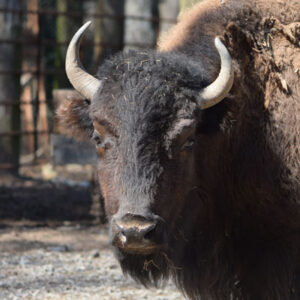
Penny
OVERVIEW
CONSERVATION STATUS
Near Threatened
AVERAGE SIZE
Compared to a 6′ Man
AVERAGE WEIGHT
Females: 1,000 lbs
Males: 2,000 lbs
AVERAGE LIFESPAN
15 – 20 Years
DIET
Herbivore
REGIONS
North America
Bison have roamed across all of North America since prehistoric times. Large herds lived in river valleys, on prairies, and across the plains. After English settlers dwindled their population to mere hundreds, killing millions of them for food, fur, and sport, they were on the brink of extinction. President Theodore Roosevelt and New York’s Bronx Zoo’s William Hornaday, together with other private participants, created the American Bison Society. In 1907, the Bronx Zoo began to send bison west, mainly to Wichita Mountains Reserve, Wind Cave National Park, and the National Bison Range in an effort to repopulate the herds. Currently, about 500,000 bison live on preserves and ranches, as well as in zoos and sanctuaries across the country.
APPEARANCE
The largest mammal in the United States, averaging 1 ton in weight, there’s no mistaking a bison when you see one. Six feet tall (with some slightly taller), their large shoulder hump is their highest part. Both male and female bison have short, curved black horns that are used for defense. Their dense fur is brown with a thicker, wooly mane of a black-brown color around their heads and under their chins. This gives them a bearded appearance. Their coats and a heavy layer of fat keep them warm even during a snowstorm. In the spring, they will rub and scratch at tree trunks in order to help shed their winter coats. Despite standing on rather short legs and hooves, bison are quite fast, able to run short distances at up to 35 to 40 miles per hour. Surprisingly, they can also jump 6 feet in the air. They have rather poor eyesight which is what leads them to stampede as they simply follow the herd.
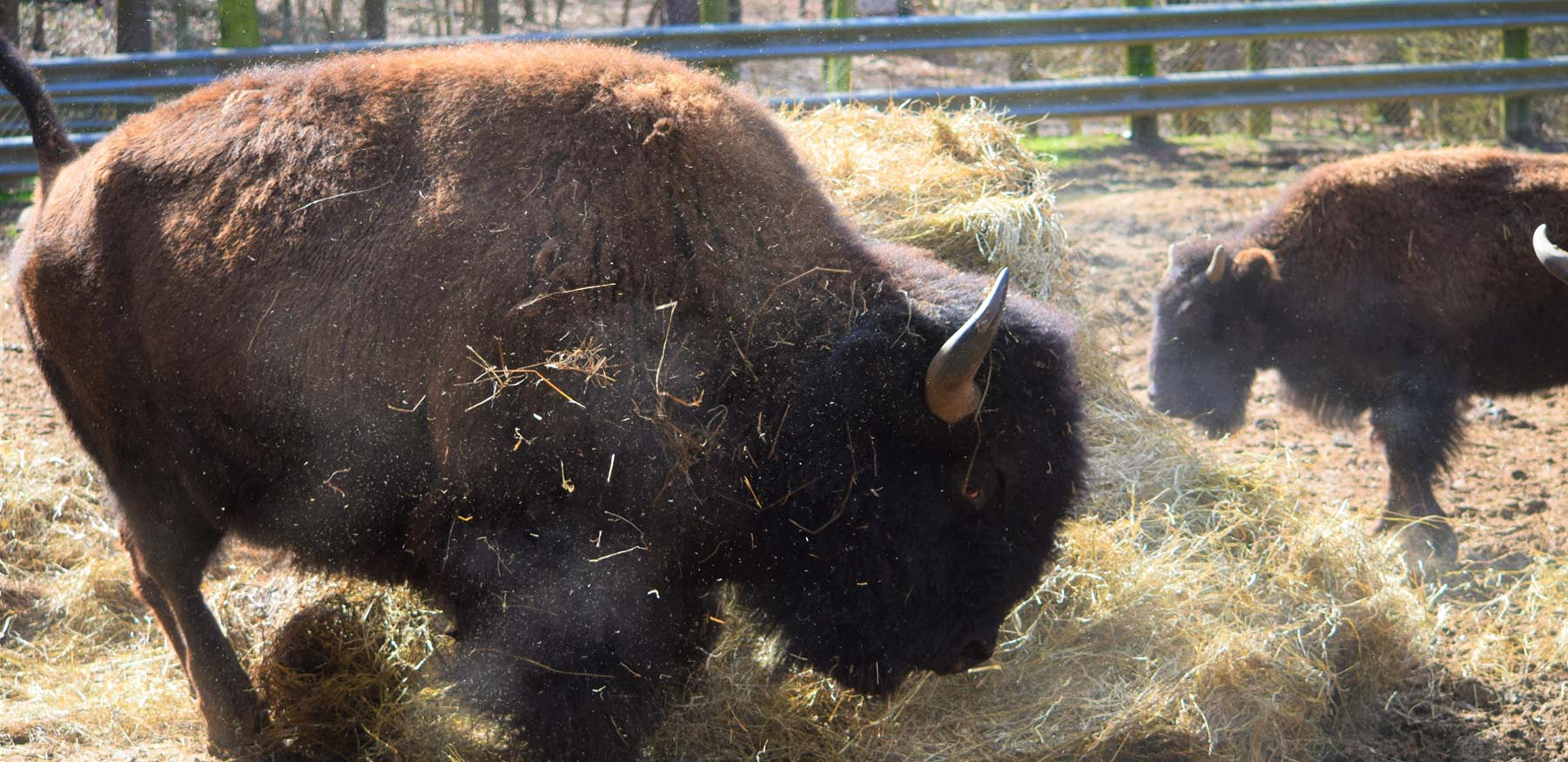
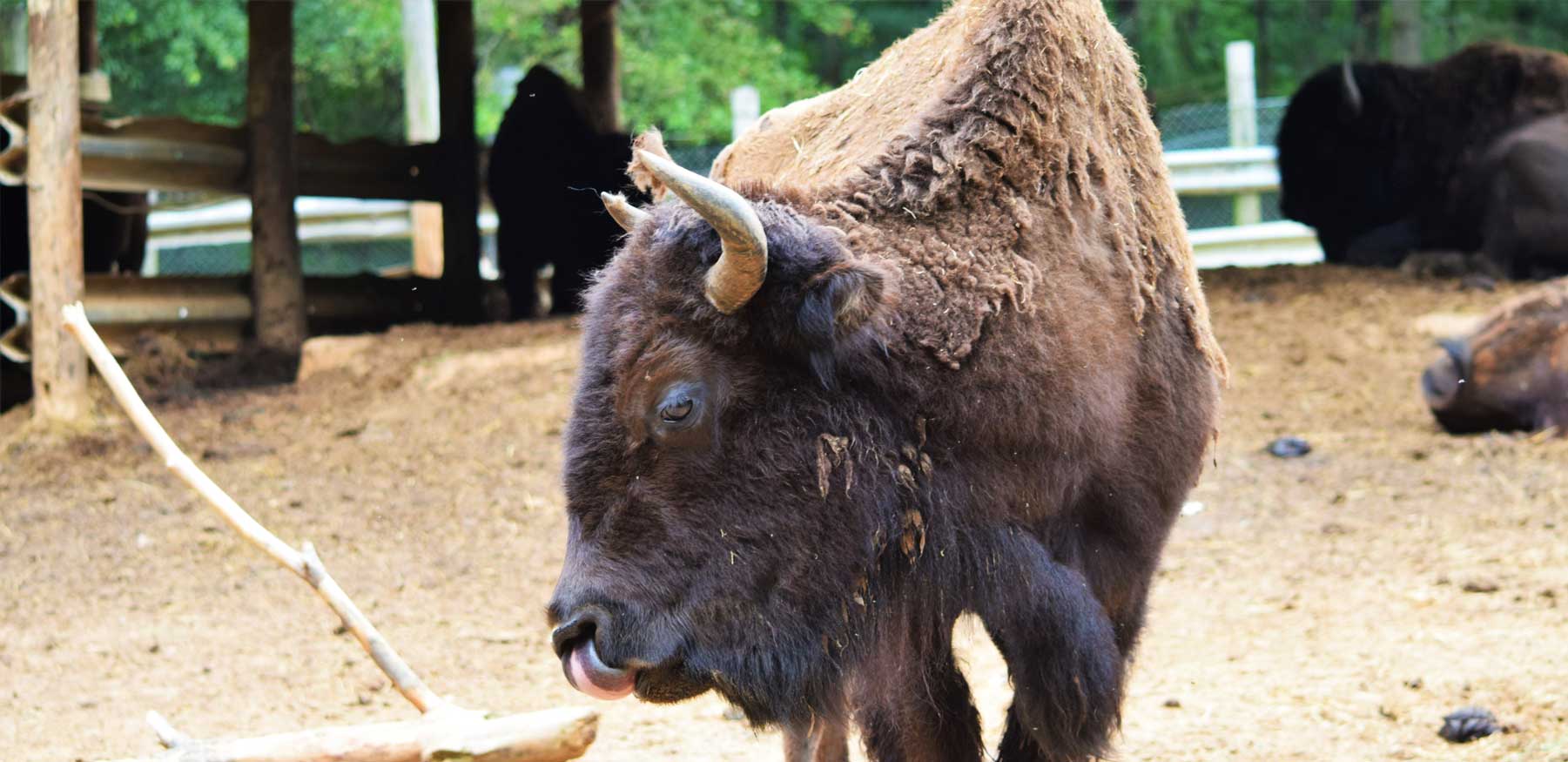
CHARACTERISTICS
As they graze, bison use their long tongues to rip grasses, herbs, twigs, and leaves free, which they regurgitate and chew as cud before digesting. They can be found “wallowing,” which is when they lie and roll in a dirt depression, possibly to help shed winter coats, rid themselves of pesky bugs or simply just for fun.
Males and females stay in separate herds except during the rut (mating season.) At that time bulls (males) will compete for mating rights with a sow (female). Females will give birth to one calf after a nine-month gestation period. The calf is a lighter reddish-brown. The calf will stay close to their mother until about 7 months old.
Bison are very unpredictable in regards to temperament. They are capable of charging at any moment, yet they are also very playful, and the majority of the herds are somewhat docile, keeping to themselves.


